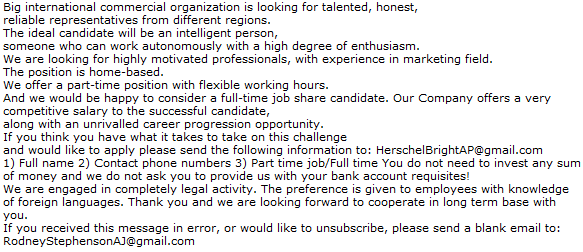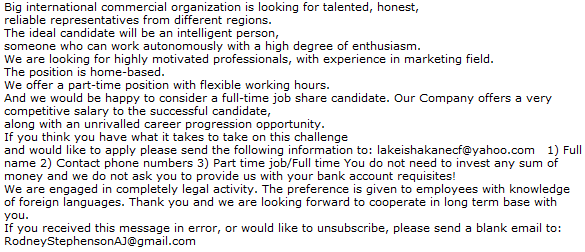|
|||||||||
| Previous page | Do you use a pop-up blocker? If so, please read this. | ||||||||
|
|||||||||
| Show Date: 2007.10.21 | |||||||||
A belt, suspenders, and duc(k/t)* tapeI mentioned in last week's program that I'd recorded the podcast on Thursday. That's because I was out of town during the weekend—in Pittsburgh to photograph the wedding of my older daughter's best friend. Knowing that if anything can possibly go wrong, it will, and that if nothing can possibly go wrong, it still will, I did everything I could to safeguard the images. I shot all of the images in raw mode to get the best possible quality for each image, but that meant that every image was 6 to 10 MB in size. After the reception, I copied all of the images to my notebook computer's hard disk. Then I burned two DVDs as a backup and to backup the backup, I copied all of the pictures onto thumb drives.
When I got home, I copied the images to the desktop computer's hard drive and then made an image of the directory on an external drive that I normally keep at the office. Then I could format the camera's memory cards and the thumb drives. I still had copies of the originals on DVD, the images were on another backup drive by midweek, and all of the files will eventually be stored as part of my online backup at Carbonite. Clearly these are pictures I wouldn't want to lose. Stored in as many locations as they are, the wedding pictures consume about 30GB of disk space: 6GB on the desktop, 6GB on each of 2 backups that are here in town, 6GB on DVDs, and 6GB on a Carbonite drive. In the mid 1980s, that much storage space would have cost about $3 million. Today I can buy a 500GB external hard drive for less than $125 -- and that's enough to store more than 16 weddings' worth of photos at 30GB per wedding. So in mid-80s terms, that's about $50,000,000 worth of disk space. What's a picture worth?Is a picture worth 1000 words? If so, what's a word worth? Is a word worth more if it's part of a business plan or if it's part of your high school sophomore's term paper for history? Either way, you wouldn't want to lose it or the words surrounding it. In the old days, it didn't matter what happened to pictures as long as we had the negatives. You could always have another print made. But today many of us look at photos on the screen and, to Kodak's chagrin, we don't have prints made. So if you lose the data on the hard drive, you've effectively lost both the pictures (what you view) and the negatives (what you use to create new pictures.) That's why it's so important to have everything backed up. At the very least, you should be sure that you have at least 2 copies of the files before you delete the files from the camera's memory card. One of those copies should be in another building: DVDs that you create and then store in a bank safe deposit box, take to the office, or give to a relative for safekeeping are a good choice. So is an external hard drive that you store in a safe location. Or an online backup service such as Carbonite. The leopard prepares to springThe next version of Apple's operating system (OS X 10.5, also known as Leopard) will be available later this week. Although this version is more evolutionary than revolutionary, Apple's marketing honchos still point to 300 enhancements that will accompany the cat. Apple calls Time Machine "a giant leap backward" because it's a quick and easy backup system. Backups can be complicated because people often don't understand the differences between operating system files, program files, data files, and hidden files. They don't understand the difference between a full backup, a differential backup, an incremental backup, and cloning a disk. Time Machine makes it simple. Maybe a bit too simple. The backup system lacks granularity, which is a complicated way of saying that your choices are "all" or "nothing". Maybe you want to backup the photos from your niece's wedding, last year's family reunion, and your son's high school graduation but you don't particularly want to back up test pictures you made of the cats, audio files you created from CDs that you own, or the files you brought home from the office to work on and then took back. If you want that kind of functionality, Time Machine won't work for you. But for a lot of people, it will make possible a real backup for the first time because all you need to do is buy an external drive, plug it in, allow Leopard to find it, and say that you want to use it as a backup drive. Easy. Boot Camp, the Apple function that allows you to run Windows or the Mac OS on your Intel-powered Mac has been improved. If you install Windows on the Mac, you'll be able to read and write Windows files so long as you format the Windows partition as a FAT32 drive. Boot Camp can read FAT32 drives, but it's still incapable of reading an NTFS volume, which is a better choice for Windows. Of course, if you have a Mac and you're installing Windows on it, you're probably doing it for compatibility and not because you want to run Windows most of the time. If you use your Mac to watch DVDs, you'll like the new and improved screen interface and Leopard includes some technology that allows it to recover the program from some damaged DVDs so that the show will go on even if there's a problem with the disc. It should be an interesting week for Mac users. Greenpeace bites the Apple IphoneGreenpeace says scientific tests show that Apple's Iphone contains hazardous chemicals, some of which are no longer used by other mobile phone makers. This despite a claim by Steve Jobs that Apple is "ahead of, or will soon be ahead of, most of its competitors" on environmental issues. The environmental action group bought a phone and sent it to a research laboratory in the UK. The results weren't good. The independent laboratory tested 18 internal and external components and confirmed the presence of brominated compounds in half the samples along with a mixture of other toxic chemicals. "Steve Jobs has missed the call on making the iPhone his first step towards greening Apple's products," said Zeina Alhajj, Greenpeace International toxics campaigner, who noted that Nokia sells mobile phones free of PVC. You can see a slide show of how the phone was disassembled for testing. Greenpeace found that the battery was glued and soldered to the handset, which hinders battery replacement and makes separation for recycling, or appropriate disposal, more difficult. The organization claims that Nokia, Motorola, and Sony Ericsson sell phones with fewer unsafe chemicals and that Nokia and Sony Ericsson have better take-back policies for recycling and that those firms accept responsibility for reuse and recycling of phones, unlike Apple. For the full report, see "Missed call: the iPhone's hazardous chemicals" (PDF document) on the Greenpeace website. Stupid spam of the weekTwo for the price of one this week. Within minutes of each other, I received two spams that encouraged me to apply for "honest work" with a "real company" and promised that "no investment" was required. Both of these firms wanted to pay me a lot of money for doing very little. You'll probably question my intelligence, but I passed up both offers. Become employed today in a respectable international company and reach the financial success. (no investment required)
|
|||||||||
|
|||||||||
| Home • Programs • Reference • Subscribe to Technology Corner News • Contact Us • Terms of Use ©2007 by William Blinn Communications. All rights reserved. |
|||||||||
This is the only ad you'll ever see on this site. It's for my website host, BlueHost in Orem, Utah. Over the past several years, they have proven to be honest, reliable, and progressive. If you need to host a website, please click the banner below to see what BlueHost has to offer. |
|||||||||

|
|||||||||




